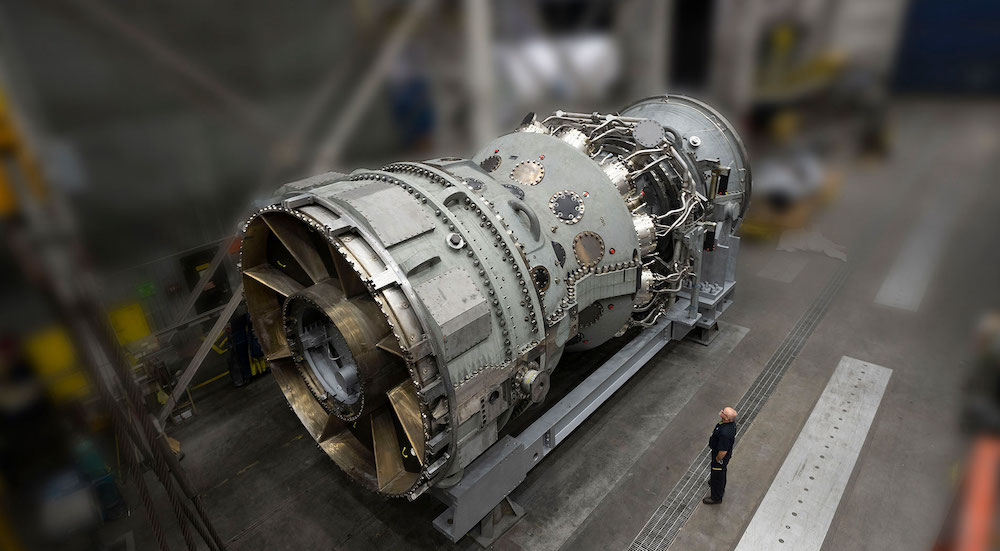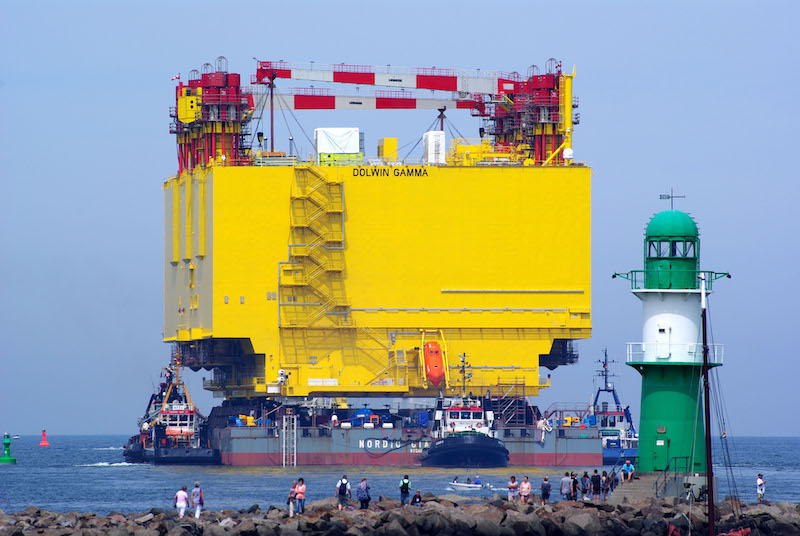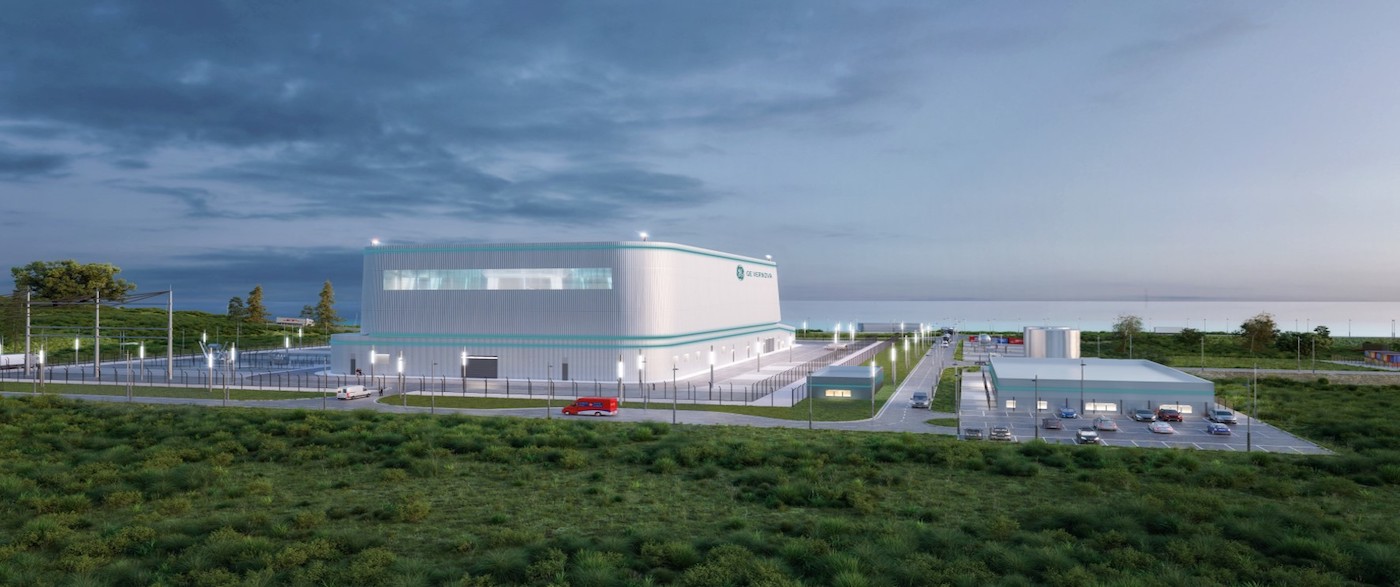With GE Vernova standing at the threshold of becoming a new purpose-built, energy-focused company in a few short weeks, it’s worth noting the inspiration for its name. It is, says the company, “a combination of ver, derived from verde and verdant to signal the greens and blues of the Earth, and nova, from the Latin novus, or ‘new.’” Novus also happens to be one of the roots of the word “innovation,” a pillar of GE from its founding. Innovation, then, is literally in the company’s DNA.
It all began, of course, with Thomas Edison. In 1876 he brought together the best minds available to work in a new laboratory in Menlo Park, New Jersey, which soon became known as “the invention factory.” In 1880 he came up with one of his brightest ideas — and one that became synonymous with inspiration — when he patented the first electric lightbulb.
Ten years later, General Electric was born in Schenectady, New York, and the rest is history — but history doesn’t write itself. The legacy of Edison and his merry band of inventors has been carried on over the generations by creative thinkers who’ve drawn inspiration across diverse fields of study to arrive at something new. Today that spirit of innovation is alive and well in GE Vernova’s embrace of lean, its drive to electrify and decarbonize the world, and its commitment to sustainability. As of 2024, GE Vernova holds 36,000 patents and patent applications in 60 countries, and approximately 30% of the world’s electricity is generated using the company’s installed base of technologies.
GE Vernova’s researchers are driven by the urgency to deliver a net zero energy system, ensure reliable and secure energy, and address the needs of the approximately 750 million people in the world who are without electricity. Its advances in materials, combustion, and electric power continue to promote a more diverse, more distributed, and more digitized energy landscape. With demand for electricity projected to grow by more than 50% by 2040 — and with the power sector accounting for 40% of total global man-made CO2 emissions — the need for bright, bold new ideas has never been so clear.
At GE Vernova’s Advanced Research Centers (ARC) in Schenectady, New York, and Bengalaru, India, roughly 300 scientists and researchers collaborate with governments, universities, companies, and others to solve the industry’s toughest problems — in addition to the research and development taking place within each business. GE Vernova has more than 80 active programs with the U.S. Department of Energy that are tackling the most critical problems and finding new breakthroughs.
GE Vernova has a long heritage of being a world leader in innovation and looks to continue to innovate breakthroughs in key technologies such as carbon capture and sequestration, direct air capture, 100% hydrogen combustion capabilities, next-generation nuclear technology, software, grid enhancements, and advanced manufacturing techniques.
In its three core businesses — Power, Wind, and Electrification — GE Vernova has an inspiring list of recent accomplishments and new developments set to take off in the coming years:
The Power segment plays a key role in the energy transition through the decarbonization of its substantial gas-powered turbine fleet, at the same time that it strives to meet the world’s growing energy demands. From the small quick-starting aeroderivative gas turbines, including the LM2500, to the biggest 9HA turbines, the Power business has improved efficiency and lowered CO2 intensity while helping utilities shift from coal to lower-carbon natural gas. GE Vernova’s HA gas turbine has set two efficiency records, as recognized by Guinness World Records, operating a 7HA turbine at 63.08% gross efficiency at Japan’s Chubu Electric Nishi-Nagoya power plant.

Looking ahead, the company is working along “dual paths” to achieve greater carbon reduction: cost-effective and deployable carbon capture and sequestration solutions and the development of hydrogen as a fuel. At Alabama’s James M. Barry power plant, a development project seeks to integrate carbon capture, utilization, and storage (CCUS) technology that would prevent CO2 from entering the atmosphere and either trap it safely underground or reuse it to create new products. And in 2022 the Long Ridge Energy Terminal, in Ohio, became the first purpose-built power plant in the United States to generate power with hydrogen — which in the form of green hydrogen produced with renewable energy is a zero-carbon fuel — a trend that GE Vernova has already extended in places like Australia and the Middle East in its effort to build sustainable energy-producing practices into the worldwide grid.
GE Hitachi Nuclear Energy, another GE Vernova division, has been a leader in small modular nuclear reactors (SMRs) as well. GE Hitachi secured the first commercial award for an SMR in North America, signing an agreement with Ontario Power Generation. Other utilities have selected GE Hitachi technology to develop SMR plants in Tennessee, Poland, and elsewhere.
The Wind business, comprising Onshore Wind, Offshore Wind, and LM Wind Power, is focused on accelerating the rapid expansion of carbon-free wind energy. Its reliable, efficient workhorse onshore wind turbines are being adopted by some of the largest energy projects in the Western Hemisphere, like the recently announced SunZia wind farm in New Mexico. The Offshore segment, meanwhile, is deploying one of the world’s most powerful wind turbines, the 13- and 14-megawatt Haliade-X, off the coasts of England and Massachusetts. With each Haliade-X that goes online, thousands more homes will benefit from zero-carbon energy.
To increase the amount of power that reaches end users, GE Vernova is developing adaptive wind farm controls that improve efficiency and reliability and help integrate those electrons into the power grid; developing advanced drivetrain, controls, and blade technologies; and investing in advanced manufacturing technologies, including autonomous inspection and supply chain optimization, to improve quality and increase throughput in production facilities.

The wind business, like all of GE Vernova’s business segments, harnesses lean to develop breakthrough innovations that drive better outcomes for customers. At a facility in Saint-Nazaire, France, that manufactures and assembles nacelles for wind turbines, new post-assembly processes were introduced into the main production flow to reduce lead time between nacelle completion and shipment, resulting in post-production assembly hours per nacelle being reduced by 68%.
The Electrification business is taking on a challenge no smaller than modernizing the power grid so that it can accommodate the transformative growth of renewable energy in the decades to come. The Grid Solutions business is focused on increasing the efficiency and resiliency of the grid through greater asset intelligence, connectivity, and digital integration and control.
Among the innovations the segment has introduced are more seamless and reliable renewable energy integrations using high-voltage direct current (HVDC) architectures that minimize loss over long distances, such as from offshore wind farms to mainland relay stations. AI-enabled CERius software helps energy customers obtain more accurate emissions data and identify areas to reduce carbon emissions, while also developing strategic decarbonization plans. And grid orchestration software called GridOS spans planning, operating, and transacting activities, growing and adapting organically as the power system evolves.
“Delivering innovation and energy to change the world” — this is the mandate GE Vernova has set for itself as it enters an exciting and revolutionary phase in the world’s energy evolution. Turning cutting-edge research into impactful real-world solutions that disrupt the status quo and usher in a more sustainable future is what energizes the innovators of today and tomorrow.
